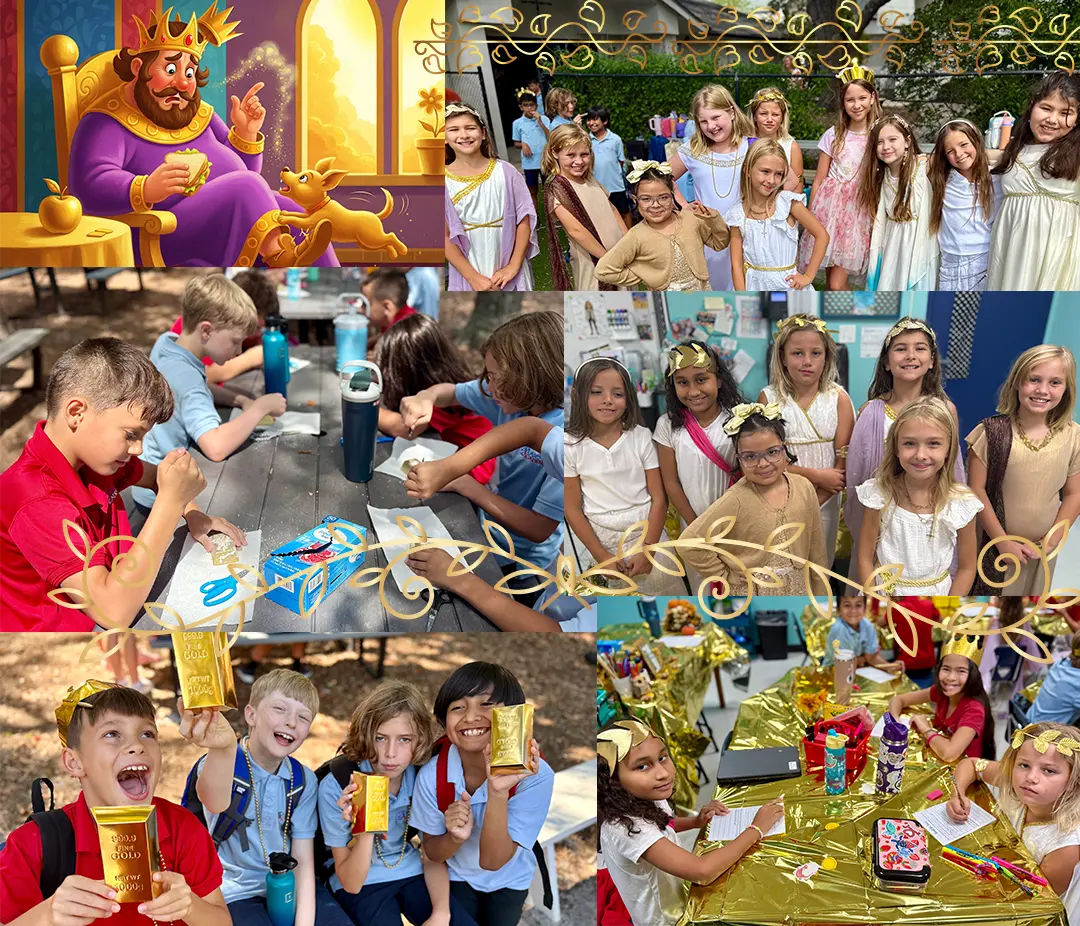PALM HARBOR: Mrs. Townsend’s and Mrs. Well’s fourth graders’ classroom transformed into something between a literature circle and an archaeological site.
Immersing themselves into the theme of the day for the next several hours, these students would follow the trail of one of mythology’s most famous characters: King Midas, the man who turned everything he touched into gold, from ancient Greek storytelling straight through to modern mineral science.
The day started with reading. Students worked through multiple versions of “King Midas and the Golden Touch,” tracking how the story changed as it moved across cultures and centuries. They sequenced events, hunted for themes, and cited evidence from the text to support their interpretations.
But the real surprise came when the conversation shifted from myth to metallurgy.
The initial question was simple: What exactly is gold? Students discussed the metal’s properties, its historical value, and why civilizations have prized it for thousands of years. Then came the twist: fool’s gold!
Pyrite, the mineral that has deceived hopeful prospectors throughout history, became the afternoon’s focus. Students learned why this brassy impostor looks so convincing and how people have mistaken it for treasure since ancient times.
The lesson moved from abstract to tangible when students began their excavation project. Using tools and careful observation, they extracted pyrite specimens, recorded what they saw, and tested their predictions about the mineral’s properties.
The exercise connected literature to geology, history to chemistry. A story about greed and consequences became a gateway to understanding material science. Characters in a myth led to questions about crystalline structures.
Students who struggle with traditional reading exercises found new entry points through hands-on science work. Others who excel at literacy discovered unexpected interest in minerals and observation techniques.
The success of Midas Monday raises a question educators have debated for years: Do students learn better when subjects blend together rather than remain in separate boxes?
Monday’s evidence suggests they do. When reading skills serve a larger investigation, when science illuminates a story, when history explains both, students see why any of it matters.
Fourth graders left school that day knowing more about textual evidence and mineral composition. But they also left with something harder to measure: a sense that knowledge connects, that stories and science speak to each other, that learning one thing often means discovering another.
King Midas learned his lesson about gold the hard way. These fourth graders learned theirs through excavation, analysis, and one well-designed Monday.

